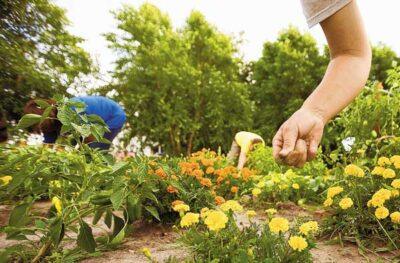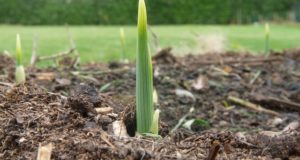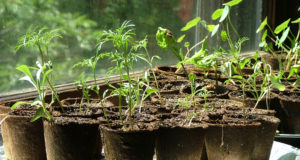
Image source: HamptonRoads.com
Food gardening and survival gardening are two of the most popular topics I write about as a gardener. However, I enjoy planting flowers in my garden, too. There’s just something about watching a flower bloom that makes me happy. That’s why flowers always have a welcome place in my yard and garden beds.
Most of us think spring is the prime season for growing flowers … and well, it is. It’s surely the prime season for blooming flowers. But to enjoy those blooms, there are some tasks you should perform in the garden now so you’ll have plenty of gorgeous flowers in just a few months.
Autumn annual seeding
Fall is the right time to sow annual seeds for next spring’s flower garden. Annuals are plants that go from seed to flower in just one single growing season, and then die away. Many annuals will go to seed on their own and will reappear year after year after year, with no help from the gardener. This of course, depends on the type of annual and the climate in which they are planted. Many annual seeds are unfazed by cold weather and can overwinter with ease. These “no work” spring volunteer seedlings usually appear in areas with milder winter climates.
Great self-seeders for milder climates include annuals like poppies, cornflower, calendula, four o’clocks, baby’s breath, daisies, cleome, and love-in-a-midst (my personal favorite). Be careful as some of these blooming beauties can verge on being invasive pests … you may need to pull some up as they grow and control where they are allowed to spread.
Companion Planting and Other Secrets of Flowers
As you clean up your garden beds this fall and as you deadhead flowers next summer, shake the flower tops or dead seedheads where you’d like the plants to reseed themselves. Nature will take over and do the rest of the work for you.
Planting Annual Seeds
If your plants don’t typically reseed themselves, or if you’re just getting started, you can still plant seeds now to enjoy in the spring. For direct sowing of annual seeds in the ground, wait until after the first killing frost in the fall. Lightly scratch up the ground to loosen approximately one inch of soil. Remove any weeds or rocks you see. Shake your seeds over the soil. You may want to add some dry sand to the seeds before sowing – this will help you see where the seeds land in the soil. Sprinkle soil over the seeds, or gently rake soil back on top (but don’t cover them too thick). Water and wait for spring!
Bulbs Galore
Fall is a great time to plant bulbs for spring blooming. Tulips, daffodils, crocuses, and irises … there are so many options when gardening with bulbs! Each year I plant more bulbs because I can’t get enough of these gorgeous flowers. You can never have too many tulips, I say.
Bulbs should be planted by December at the very latest. Waiting too long to plant will cause the bulbs to lose their viability and they may not have enough “juice” left in them to bloom come spring. When planting your bulbs, plant only the healthy and firm bulbs. Shriveled and soft bulbs should be discarded, as they are probably too unhealthy to bloom and could possibly be rotten.
If squirrels or other animals are eating your bulbs before they have a chance to grow, surround the bulbs in a small cage of chicken wire when planting. Then cover with dirt and mulch. This may or may not work, depending on what kind of animal is eating the bulbs. I’ve had mixed success, personally. But chicken wire doesn’t cost much and it’s worth a shot!
If you simply cannot wait until spring, try forcing some bulbs indoors this winter. Paperwhites are an easy-to-force bulb that gardeners (and kids) will love to grow inside during the colder months.
Perennials & Hardy Annuals Give You Color NOW
You don’t have to wait for spring to enjoy bright, blooming colors right now in your fall garden. Several perennials offer gorgeous blazes of fall color, even though the weather is turning cold. My favorite fall perennials are mums, asters, autumn “frost” hosta, sedum, and Solomon’s seal.
Hardy annuals are another option for some climates. Each fall, I plant pansies around my mailbox and in my front flower beds for a beautiful pop of color. Some years the pansies do great and thrive all winter long. Other years they are a little lackluster after a few hard freezes. The difference? The climate, of course. Colder and wetter winters make even the hardiest of annuals wince a bit. But the joy they bring in the fall and early winter make planting them worth it, at least for me.
 Off The Grid News Better Ideas For Off The Grid Living
Off The Grid News Better Ideas For Off The Grid Living




